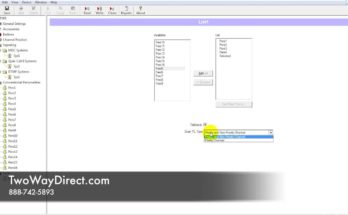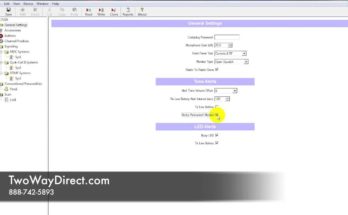Detailed tutorial on connecting and programming the Nokia 5110 LCD. In this first part I’m only concerned with sending the bare minimum of commands so that s…
14 Comments on “Arduino Nokia 5110 LCD Tutorial #1 – Connecting and Initial Programming”
Comments are closed.



Sir, thank you for the video, the way you explained how to understand lcd
commands helped a lot. I had a different issue with my 5510 lcd which I
think might be useful to explain. I’ve connected the lcd and MCU (I use AVR
attiny2313a) directly to the USB port of my PC. It works, but due to
unstable USB voltage the picture flickered a lot. After I’ve added l7805 5V
stabilizer it worked perfectly. There goes, maybe it helps somebody. Again,
thank you for the tutorial!!!
hi – what do you mean by mentioning ‘cascading displays’? can you hook up
more than one and have them display different data?
Very good video. Is there a good link to get the tech-manual for the LCD
you are using in the video (specifically)? I have the exact same LCD as
the one on this video.
Thank you.
Freddy
Thanks for this very informative video ….I have a problem when I
connect the Backlight pin to the ground it is not lighting up and when when
I connect it to 3.3V pin it is working fine .But in your tutorial you
mentioned connecting BackLight pin to ground which is not working .
You should define the commands to the LCD like #define LCD_SEG_ON 0x09
Then you dont need to worry about sending the correct number to the display
in a further application.
Great video. Thanks. I got my nokia 5110 working with my TI LaunchPad. Same
code, same pinout.
This is just what I needed to get my project going. Thanks.
Thanks mate, I was struggling!
I assume that the metalwork and red pcb have nothing to do with an actual
5110 phone. The lighting looks poor as you mentioned, is it only coming in
from the sides?
I have an old 3330 phone which has a PC8544-driven LCD. I cut out the PCB
from under the LCD to reuse the lighting SMD leds (on the PCB) which light
up the LCD quite evenly via reflection off a clear plastic moulding. There
is no LIGHTING pin on the LCD, but you do have to add a capacitor to one of
the 8 pins. The other connections are made by soldering directly to the
PCB, a bit fiddly but it costs nothing if you can reuse an old phone!
Thank you for all your very informative videos! Just a comment:
You read from the EBAY comments that part of the display may become black
when running on 5V. I have experienced that if you do not set a specific
LCD Vop (contrast) and leave that in its default value, the display becomes
relativly black after it has been running for approx 5-10 minutes.
thanks for the explanation – so the obvious solution is to get some bigger
diplay simply :D
Thank you.
I’ve read such displays could afford 5V driving , but with a reduced
lifetime.Sometimes ago i used one of these displays on an arduino; and
to be safe i iused a 1.8k/3.6k voltage divider on the driving pins.
Others also use a 10k ohms resistor in serie with each one of those pins …
Anyway, nice video, as ever !